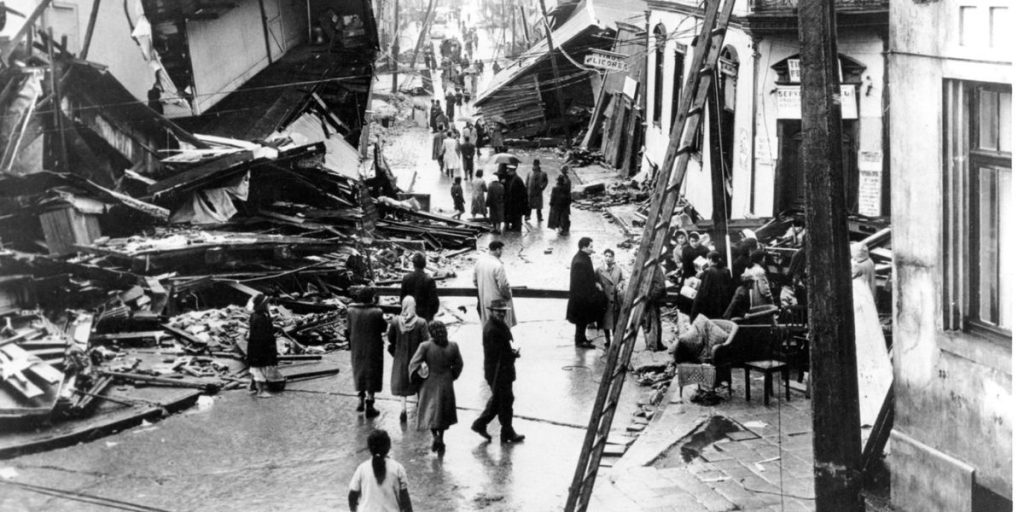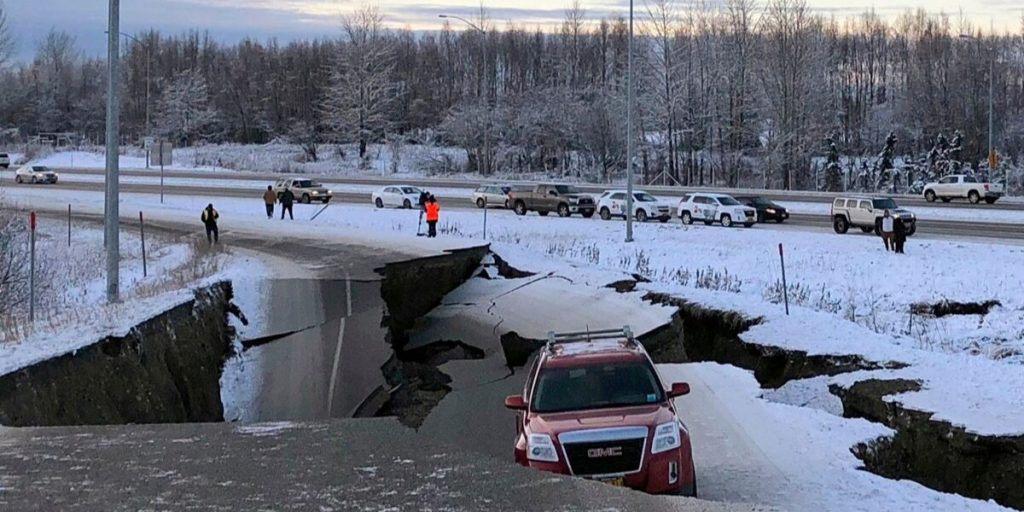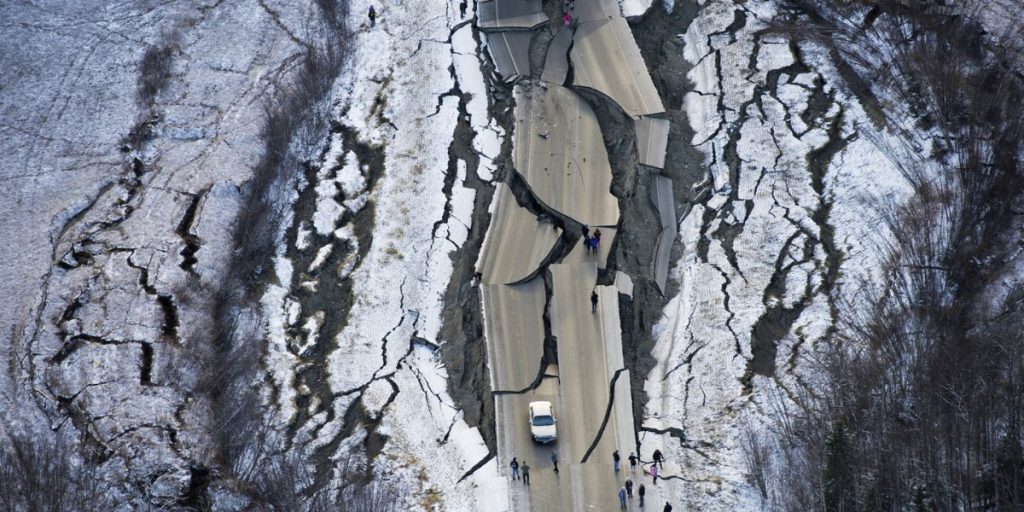Alaska has the highest average number of earthquakes of any state. The state has had more significant earthquakes than all others combined. Discover the largest earthquake to ever strike Alaska, including its magnitude, location, and ranking among the country’s most powerful seismic events. Learn why we may never have a definitive answer on the strongest earthquake to strike The Last Frontier.
What Was the Most Powerful Earthquake That Ever Shook Alaska?

The most powerful earthquake to ever hit Alaska was a 9.2 Mw event. The earthquake hit the state on March 27, 1964, at 5:36 p.m. local time. The event’s epicenter was at 60.908°N 147.339°W near Chugach, about 85 miles east-southeast of Anchorage.
The massive earthquake caused landslides and tsunamis across Alaska and far beyond. The tsunamis had an influence on remote locations such as Japan and Hawaii. The earthquake happened deep down at a depth of 16 miles and lasted between 4 and 5 minutes, enough time to damage the area.
The aftershocks that followed the primary shock were strong. Over the next 24 hours, the area was hit by nearly a dozen aftershocks with magnitudes larger than 6.0 Mw. That means that the aftershocks from this earthquake were stronger than the greatest powerful earthquake to impact locations like Oklahoma.
What Caused the 1964 Alaskan Earthquake?

The most powerful earthquake to ever hit Alaska was a megathrust event. Megathrust earthquakes are huge seismic occurrences that occur in subduction zones, where one tectonic plate is driven beneath another. The Aleutian subduction zone was the fault that caused the earthquake.
In the Aleutian Trench, the Pacific plate is subducted beneath the North American plate. This region has produced some of the world’s most powerful and catastrophic earthquakes.
Where is the Epicenter on a Map?
Officially, the epicenter of the most powerful earthquake in Alaska’s history was at 60.908°N 147.339°W. This is the Chugach Region in Alaska. This is in the southeastern region of Alaska’s main body, not the panhandle.
The earthquake’s epicenter is approximately 85 miles east-southeast of Anchorage and 45 miles east-northeast of Whittier. The Prince William Sound, located just south of this location, was severely hit by the earthquake.
Although this portion of the planet may appear remote, the earthquake had terrible impacts on both the immediate area and other areas far away.
Learn More:
- The Mysterious Red Tide in Florida and Its Dangerous Impact
- Learn About the Biggest Flood that Ever Hit Louisiana
How Much Damage Did the Earthquake Cause?

The earthquake was really powerful. The earthquake immediately affected an area of approximately 180,000 square miles, which is larger than the state of California. Some sections of Alaska fell by up to 8 feet, while others rose by more than 30 feet.
The quake caused more than $300 million in damage, which was worth over $3 billion in 2022. The earthquake triggered tremors, massive fissures, elevating and sinking landmasses, tsunamis, and landslides, tearing villages apart.
The maximum intensity on the Modified Mercalli intensity scale reached XI, indicating an intense event and the scale’s second-highest grade.
Many structures collapsed during the earthquake, while others were destroyed by landslides and tsunamis that followed. Portage and Girdwood were demolished, Anchorage suffered significant damage, and several ports near the epicenter were wrecked.
Also, Read: Explore 2 Most Incredible and Mysterious Caves in Louisiana
Conclusion
The most powerful earthquake in Alaska’s history, a 9.2 magnitude event in 1964, had its epicenter near Chugach. With profound impacts felt over 180,000 square miles, it caused significant damage, triggering tsunamis, landslides, and widespread destruction. As a megathrust earthquake in the Aleutian subduction zone, it remains a seismic benchmark, exemplifying the region’s susceptibility to powerful and catastrophic events.